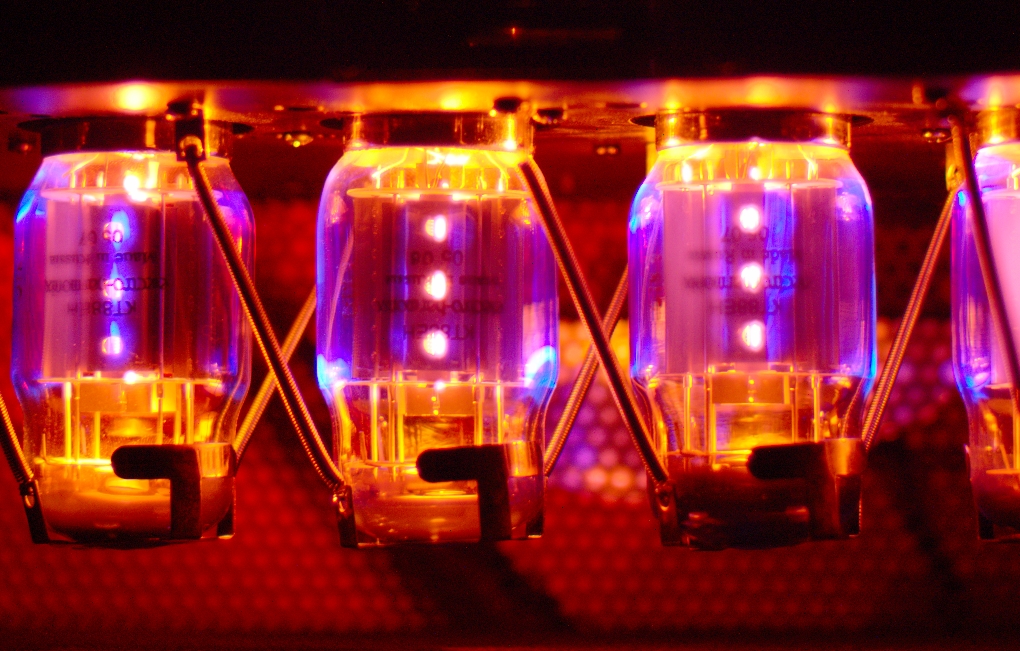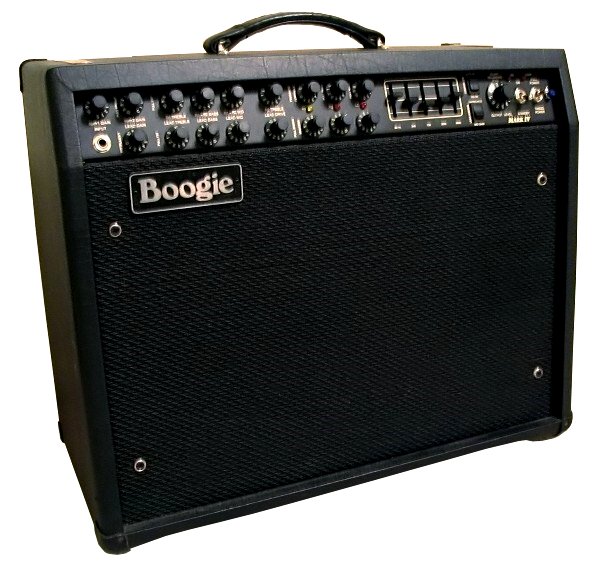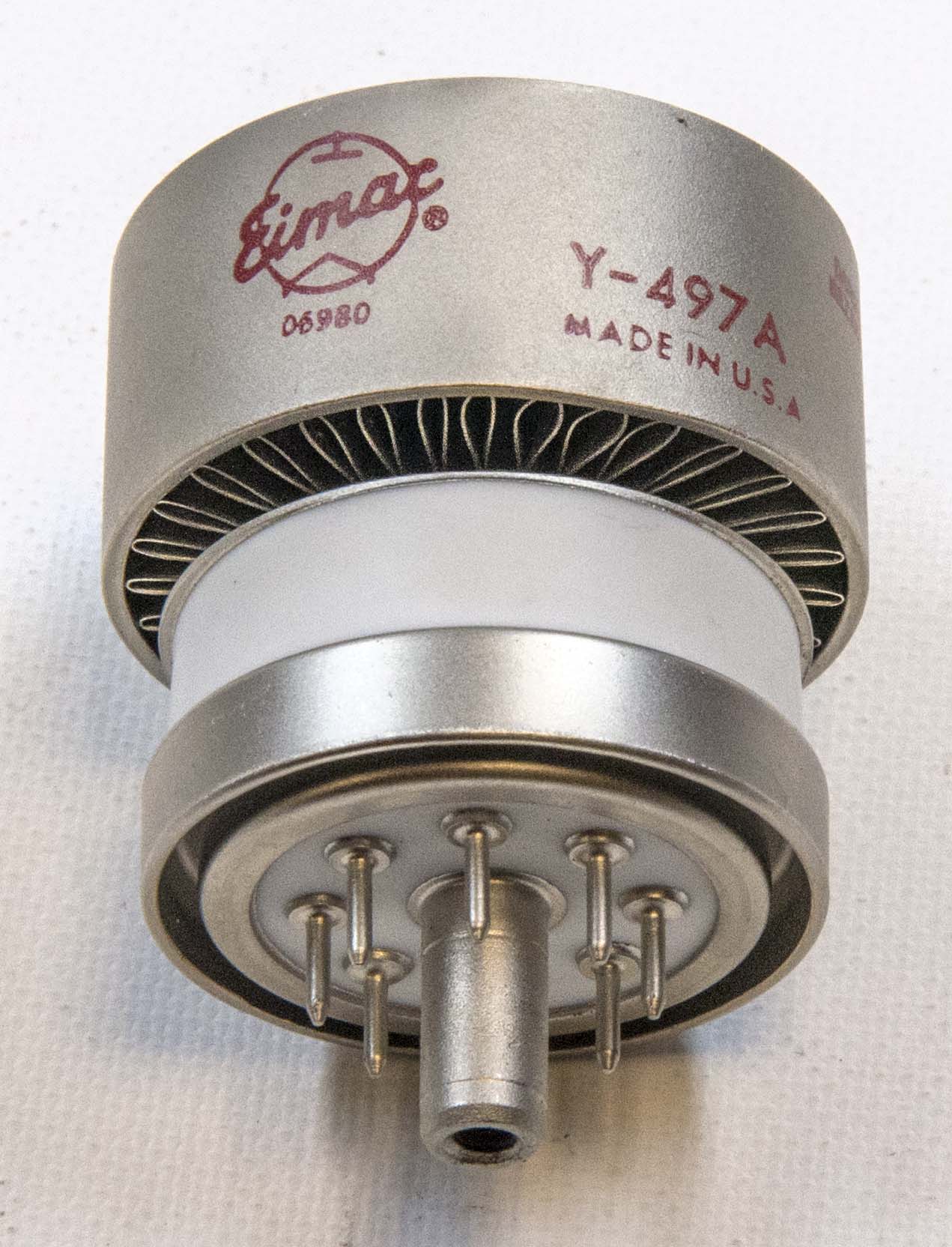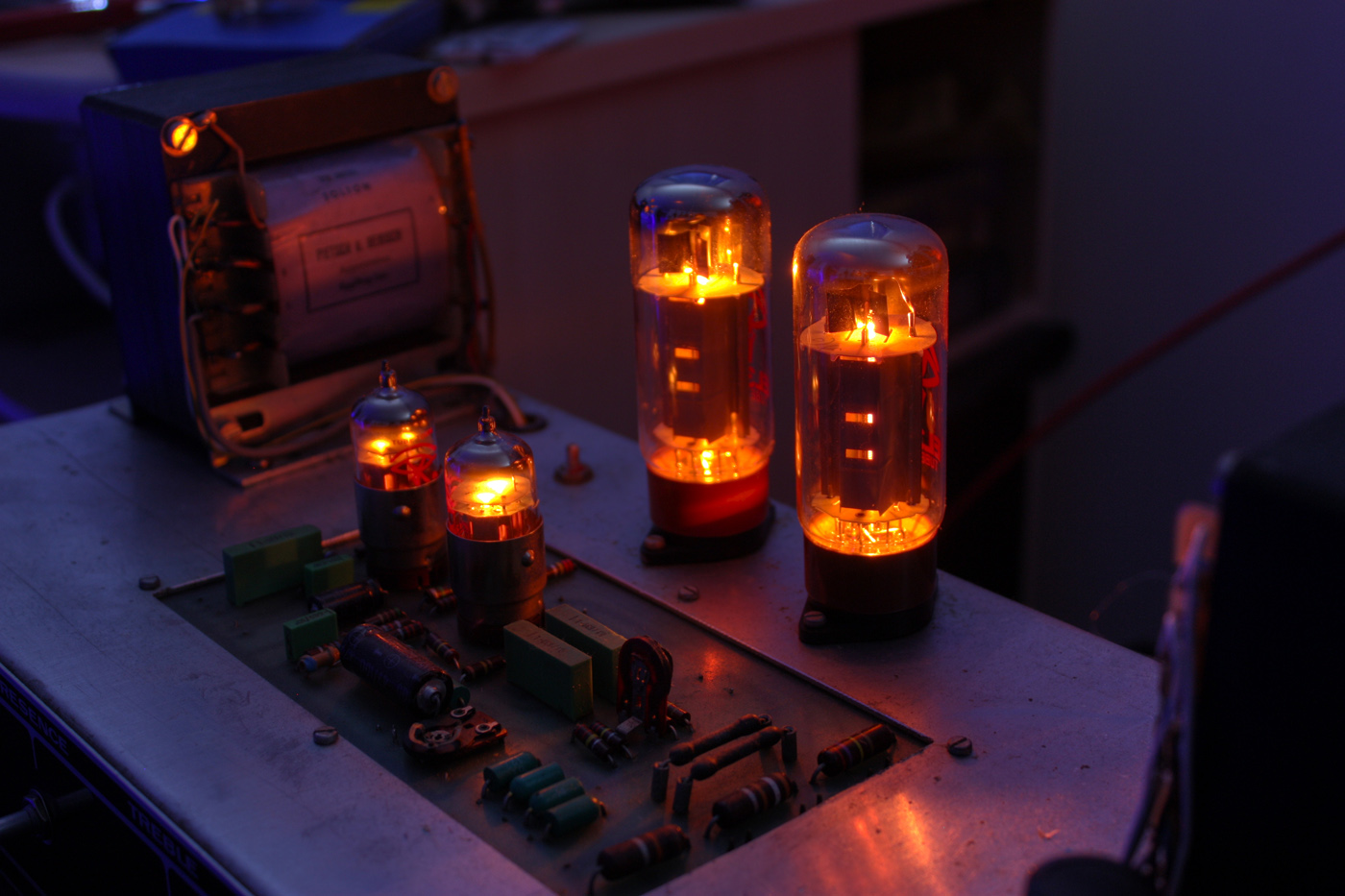|
KT90
The KT90 is a vacuum tube used in audio applications. Typically, it is used in hi-fi or electric guitar amplifier applications. KT90 was developed by Elektronska Industrija Niš (EI). KT90 is designed by Blagomir Bukumira, a leading engineer at EI. Features The KT90, or in full, "Kinkless Tetrode 90", is a beam power tetrode and features the same octal socket as its smaller variant, the KT88. It may therefore be used as a substitute, given appropriate re-biasing when used in push-pull configuration. The KT90 is currently manufactured by Electro-Harmonix, who claim that, despite its different construction, it possesses similar sound characteristics to the EL34 The EL34 is a thermionic vacuum tube of the power pentode type. The EL34 was introduced in 1955 by Mullard, which was owned by Philips. The EL34 has an octal base (indicated by the '3' in the part number) and is found mainly in the final output s ... valve. Semi-formal research has been conducted by U.K. supplier Watford ... [...More Info...] [...Related Items...] OR: [Wikipedia] [Google] [Baidu] |
KT88
The KT88 is a beam tetrode/kinkless tetrode (hence "KT") vacuum tube for Audio frequency, audio amplifier, amplification. Features The KT88 fits a standard eight-pin Tube socket#Octal base, octal socket and has similar pinout and applications as the 6L6 and EL34. Specifically designed for audio amplification, the KT88 has higher plate power and voltage ratings than the United States, American 6550. It is one of the largest tubes in its class and can handle significantly higher plate voltages than similar tubes, up to 800 volts. A KT88 Push–pull output, push-pull pair in class AB1 fixed bias is capable of 100 watts of output with 2.5% total harmonic distortion or up to about 50W at low distortion in hi-fi applications. The transmitting tubes TT21 and TT22 have almost identical transfer characteristics to KT88 but a different pinout, and by virtue of their anode being connected to the top cap have a higher plate voltage rating (1.25 kilovolt) and a higher power output capability ... [...More Info...] [...Related Items...] OR: [Wikipedia] [Google] [Baidu] |
Vacuum Tube
A vacuum tube, electron tube, thermionic valve (British usage), or tube (North America) is a device that controls electric current flow in a high vacuum between electrodes to which an electric voltage, potential difference has been applied. It takes the form of an evacuated tubular envelope of glass or sometimes metal containing electrodes connected to external connection pins. The type known as a thermionic tube or thermionic valve utilizes thermionic emission of electrons from a hot cathode for fundamental Electronics, electronic functions such as signal amplifier, amplification and current Rectifier, rectification. Non-thermionic types such as vacuum phototubes achieve electron emission through the photoelectric effect, and are used for such purposes as the detection of light and measurement of its intensity. In both types the electrons are accelerated from the cathode to the anode by the electric field in the tube. The first, and simplest, vacuum tube, the diode or Flem ... [...More Info...] [...Related Items...] OR: [Wikipedia] [Google] [Baidu] |
Guitar Amplifier
A guitar amplifier (or amp) is an electronic amplifier, electronic device or system that strengthens the electrical signal from a Pickup (music technology), pickup on an electric guitar, bass guitar, or acoustic guitar so that it can produce sound through one or more loudspeakers, which are typically housed in a wooden speaker enclosure, cabinet. A guitar amplifier may be a standalone wood or metal cabinet that contains only the power amplifier (and preamplifier) circuits, requiring the use of a separate speaker cabinet–or it may be a ''combo'' amplifier, which contains both the amplifier and one or more speakers in a wooden cabinet. There is a wide range of sizes and power ratings for guitar amplifiers, from small, lightweight practice amplifiers with a single 6-inch speaker and a 10-watt amp to heavy combo amps with four 10-inch or four 12-inch speakers and a 100-watt amplifier, which are loud enough to use in a nightclub or bar performance. Guitar amplifiers can also modify ... [...More Info...] [...Related Items...] OR: [Wikipedia] [Google] [Baidu] |
Beam Tetrode
A beam tetrode, sometimes called a beam power tube, is a type of vacuum tube or vacuum tube, thermionic valve that has two grids and forms the electron stream from the cathode into multiple partially collimated beams to produce a low potential space charge region between the anode and screen grid to return anode secondary emission electrons to the anode when the anode potential is less than that of the screen grid.Winfield G. Wagener, (May 1948"500-Mc. Transmitting Tetrode Design Considerations" ''Proceedings of the I.R.E.'', pp. 612, 617. Retrieved 10 June 2021 Beam tetrodes are usually used for power amplifier, amplification, from audio frequency to radio frequency. The beam tetrode produces greater output power than a triode or pentode with the same anode supply voltage. The first beam tetrode marketed was the Marconi N40, introduced in 1935.Editors, (Feb. 1935"New Output Tetrode" ''Electronics'', vol. 8 no.2, p. 65. Retrieved 10 June 2021K. R. Thrower, (2009) ''British Radi ... [...More Info...] [...Related Items...] OR: [Wikipedia] [Google] [Baidu] |
Electro-Harmonix
Electro-Harmonix (also commonly referred to as EHX) is a New York City-based company that makes electronic audio processors and sells rebranded vacuum tubes. The company was founded by Mike Matthews in 1968. It is best known for a series of guitar effects pedals introduced in the 1970s and 1990s. EHX also made a line of guitars in the 1970s. During the mid-1970s, Electro-Harmonix established itself as a manufacturer of guitar effects pedals. It was the first company to manufacture, and market affordable state-of-the art "stomp-boxes" for guitarists and bassists, such as the first stomp-box flanger (Electric Mistress), the first analog echo/delay unit with no moving parts (Memory Man), the first guitar synthesizer in pedal form (Micro Synthesizer), and the first tube-amp distortion simulator (Hot Tubes). In 1980, Electro-Harmonix also designed and marketed one of the first digital delay/looper pedals (16-Second Digital Delay) and a line of guitars in the 1970s. Company hist ... [...More Info...] [...Related Items...] OR: [Wikipedia] [Google] [Baidu] |
EL34
The EL34 is a thermionic vacuum tube of the power pentode type. The EL34 was introduced in 1955 by Mullard, which was owned by Philips. The EL34 has an octal base (indicated by the '3' in the part number) and is found mainly in the final output stages of audio amplification circuits; it was also designed to be suitable as a series regulator by virtue of its high permissible voltage between heater and cathode and other parameters. The American RETMA tube designation number for this tube is 6CA7. The USSR analog was 6P27S (Cyrillic: 6П27C). Specifications In common with all 'E' prefix tubes, using the Mullard–Philips tube designation, the EL34 has a heater voltage of 6.3 V. According to the data sheets found in old vacuum tube reference manuals, a pair of EL34s with 800 V plate voltage can produce 90 watts output in class AB1 in push–pull configuration. However, this configuration is rarely found. One application of this type was in "Australian Sound" public address amplifier ... [...More Info...] [...Related Items...] OR: [Wikipedia] [Google] [Baidu] |
Vacuum Tubes
A vacuum tube, electron tube, thermionic valve (British usage), or tube (North America) is a device that controls electric current flow in a high vacuum between electrodes to which an electric voltage, potential difference has been applied. It takes the form of an evacuated tubular envelope of glass or sometimes metal containing electrodes connected to external connection pins. The type known as a thermionic tube or thermionic valve utilizes thermionic emission of electrons from a hot cathode for fundamental Electronics, electronic functions such as signal amplifier, amplification and current Rectifier, rectification. Non-thermionic types such as vacuum phototubes achieve electron emission through the photoelectric effect, and are used for such purposes as the detection of light and measurement of its intensity. In both types the electrons are accelerated from the cathode to the anode by the electric field in the tube. The first, and simplest, vacuum tube, the diode or Flem ... [...More Info...] [...Related Items...] OR: [Wikipedia] [Google] [Baidu] |





